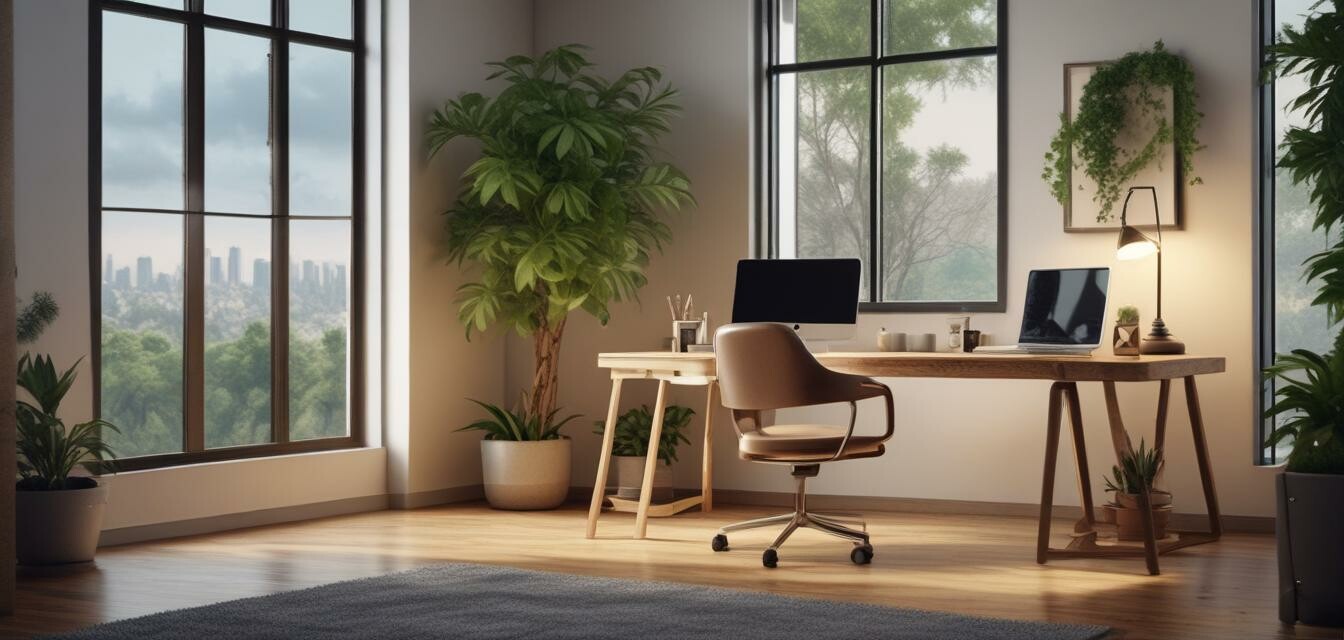
How to Make Your Home Office more Eco-Friendly
Key Takeaways
- Incorporate energy-efficient electronics to reduce power consumption.
- Use sustainable materials for your furniture and accessories.
- Add plants to improve air quality and boost productivity.
- Implement recycling practices for office supplies.
- Reduce paper usage through digital tools and storage solutions.
As more people shift towards remote work, creating an eco-friendly home office has become increasingly important. Not only does it reduce your environmental impact, but it also enhances your productivity and mental well-being. In this article, we’ll explore various tips and tricks to help you create a sustainable workspace.
1. Choose energy-efficient electronics
Using energy-efficient electronics is a simple and effective way to minimize your home office's carbon footprint. Look for devices with the ENERGY STAR label, indicating they meet energy-saving standards.
| Type of Device | Energy-efficient Options |
|---|---|
| Monitors | LED or LCD with energy-saving settings |
| Computers | Laptops or desktop PCs with low-power components |
| Peripherals | Wireless devices that are energy-efficient |
To learn more about optimizing your computer peripherals, check out our guide on computer peripherals.
2. Opt for sustainable materials
Your furniture and office accessories can significantly affect the environment. Choose sustainable materials such as bamboo, reclaimed wood, or recycled plastic for your office setup.
- Bamboo: A highly renewable resource, strong and durable.
- Reclaimed Wood: Reduces deforestation and gives a unique touch to your office.
- Recycled Plastic: Keeps plastics out of landfills and offers versatile designs.
3. Incorporate plants
Plants not only add aesthetic value to your workspace but also improve air quality. They can help reduce stress levels and promote a more peaceful atmosphere.
Best indoor plants for your office:
- Snake Plant
- Spider Plant
- Pothos
Explore more about enhancing your home office with DIY tips and tricks.
4. Implement recycling practices
Incorporating recycling practices in your day-to-day office activities is a simple way to promote sustainability. Set up designated recycling bins for paper, plastics, and electronics.
Recycling tips:
- Designate a specific area for recycling bin placement.
- Regularly check and empty recycling bins to avoid overflow.
- Educate yourself and your family about recyclable materials.
- Consider reusing materials for creative projects.
5. Reduce paper usage
With digitization, reducing paper usage has become easier and more effective. Transitioning to digital tools can significantly minimize your carbon footprint.
Consider the following alternatives:
- Digital Document Management: Use software to organize and store digital files.
- Cloud Storage Solutions: Use services like Google Drive or Dropbox for file sharing and storage.
- Digital Notebooks: Use tablets or apps for note-taking instead of paper notepads.
For more advice on how to manage your paperwork digitally, refer to our section on news and trends.
Conclusion
Creating an eco-friendly home office doesn't require drastic changes; small, consistent actions can lead to significant outcomes. By choosing energy-efficient electronics, sustainable materials, adding plants, implementing recycling practices, and reducing paper usage, you can create a workspace that reflects both your professional aspirations and environmental responsibility.
Pros
- Reduces environmental impact
- Improves workplace aesthetics
- Enhances mood and productivity
- Promotes healthier indoor air quality
Cons
- Initial investment may be higher
- Requires ongoing commitment to maintenance
- Some eco-friendly products may have limited availability
Eco-friendly tips for beginners
- Start small and set realistic goals.
- Research and choose eco-friendly brands for your purchases.
- Establish a routine to regularly check and keep your setup sustainable.
- Share your knowledge and practices with friends and family to broaden your impact.